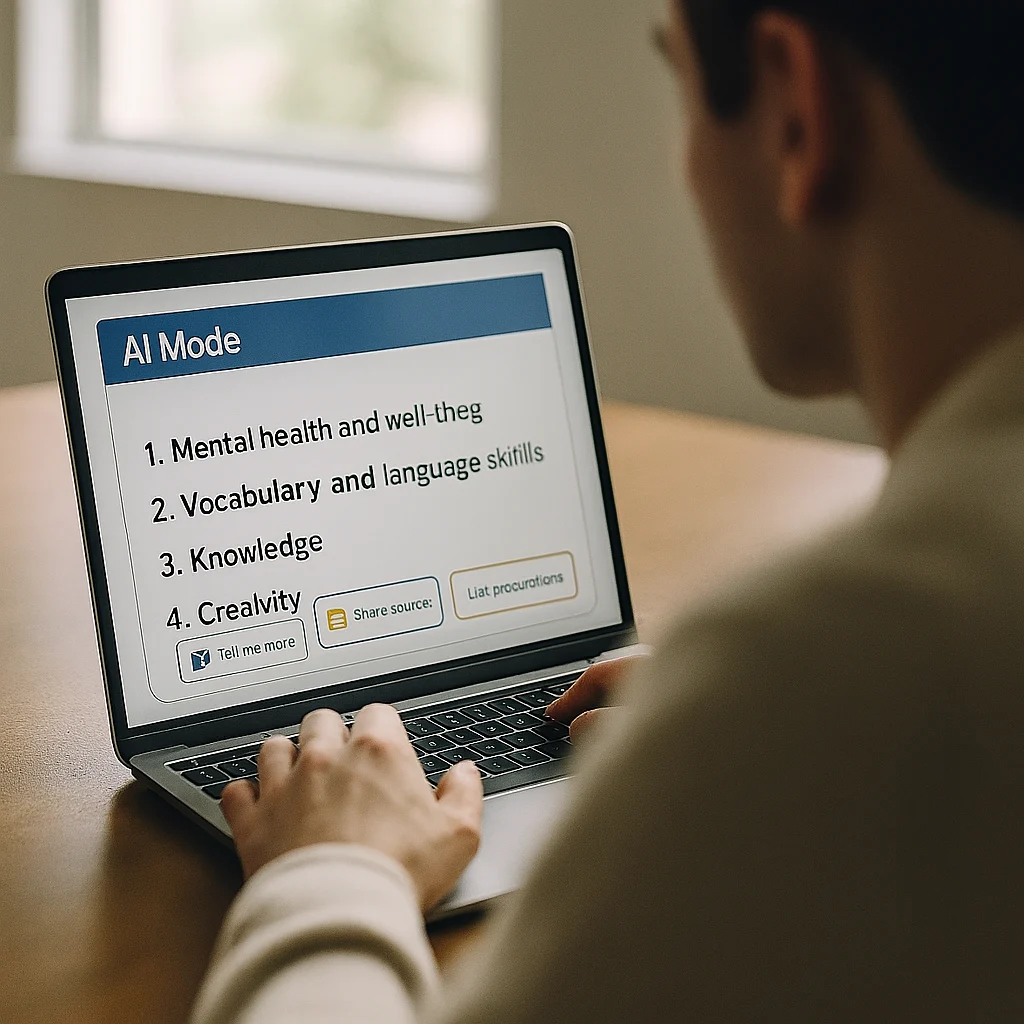Table of Contents
- Google AI Mode, what it is and how it differs from AI Overviews
- Under the hood, how AI Mode assembles answers and links
- What changes for SEO when AI Mode becomes a habit
- The official rulebook, how to qualify for AI Mode and AI Overviews
- A practical content checklist to actually show up
- Advanced tactics for AI Mode and AI Overviews
- Measuring impact and diagnosing issues without guesswork
- Market dynamics and risks you should plan for
- A four-week playbook to adapt your site
- Where this leaves your SEO strategy
Margabagus.com – Data tells the story before any opinion does. Across millions of queries in early 2025, Semrush observed AI Overviews triggering on about 13,14 percent of searches in March, nearly double January’s share, with the strongest lift on informational intents.[1] Google itself reported that when people see AI Overviews, overall usage rises, and they return with even more complex questions, a shift that set the stage for the new AI Mode.[2] BrightEdge’s longitudinal panels show impressions up year over year while click-through rates have fallen, a reality you and I must plan around with updated content architectures and value tracking.[3] Meanwhile, Google’s official guidance is unambiguous, there is no secret markup for AI Mode or AI Overviews, success still hinges on technical eligibility and people-first content.[4]
I wrote this review for a tech and business audience, so I will explain how AI Mode works, what actually changes in the results you and your customers see, and the practical steps, checklists, and measurements to stay visible.
Google AI Mode, what it is and how it differs from AI Overviews
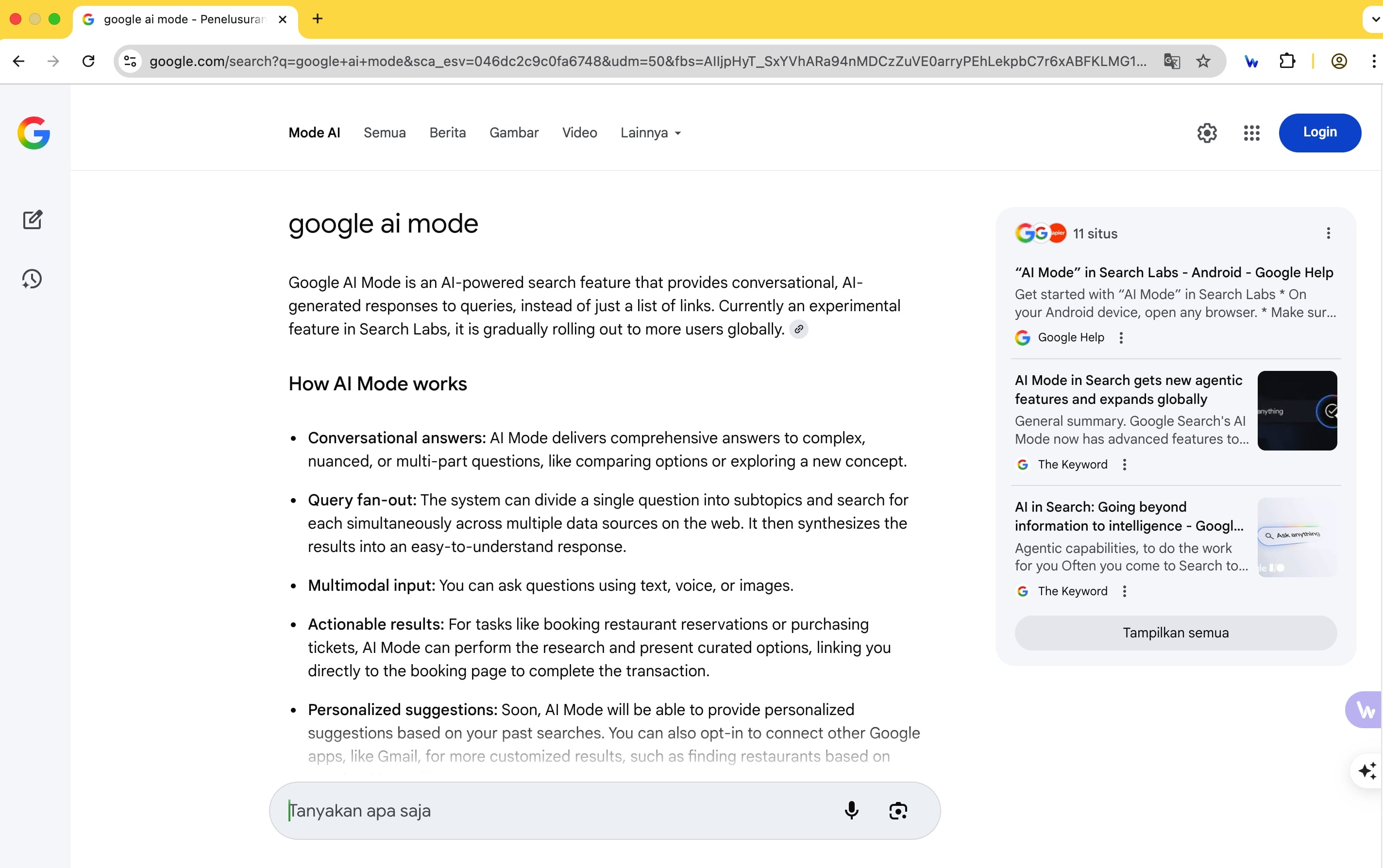
Google AI Mode results
Google AI Mode is a dedicated tab inside Search that answers multi-step questions with an AI response, then exposes helpful links so you can dive deeper, keep asking, and pivot. You can type, speak, or use images, and the system will still attempt a comprehensive response.[5] Under the hood Google describes a “query fan-out”, the system breaks your question into subtopics, issues multiple searches in parallel, then stitches the evidence and links into a synthesized answer.[6]
AI Overviews, by contrast, are summaries that sometimes appear on the classic results page when Google’s systems think a snapshot would help. They are part of core Search and cannot be disabled, you can, however, tap the Web filter to see only links. [7]
Key distinctions you should internalize:
-
Placement and intent, AI Overviews live inside classic results when additive, AI Mode is a separate tab for deeper exploration, reasoning, or comparisons.[8]
-
Modeling, AI Mode is where Google injects frontier capabilities first, including a custom Gemini 2.5 for the U.S. roll-out in 2025, with Deep Search offered to subscribers for fully cited, long-form research.[9]
-
Availability, AI Mode and AI Overviews now extend across many regions and languages, including Indonesia, according to Google’s help pages.[10]
Under the hood, how AI Mode assembles answers and links
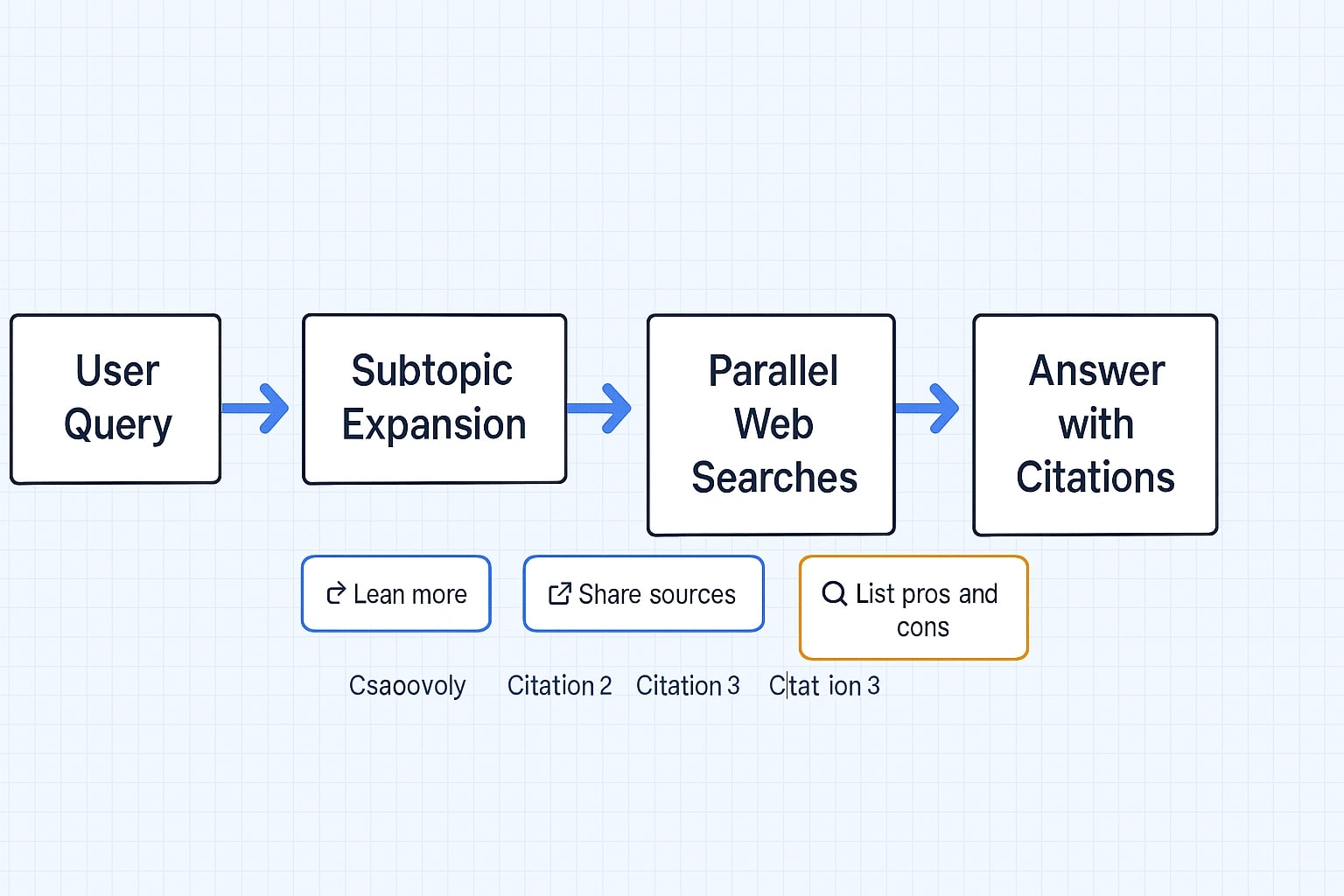
The request-to-response pipeline, from subtopic expansion to link aggregation and synthesis
Google’s documentation outlines the sequence, the system starts with query fan-out, issues related searches across subtopics, identifies diverse supporting pages in real time, then composes a response with linked citations.[11] When confidence is low, AI Mode will back off from generating and show you a set of web links instead, a safety valve meant to avoid fragile answers.[12]
In practice, that means your content can surface even if it is not the number one blue link, because the link set is assembled from a broader slice of the web than traditional ranking alone.[13] The model powering AI Mode is multimodal, it accepts text, voice, and Lens inputs, and for advanced research tasks Google is rolling out Deep Search that can fan out across hundreds of sources and return a fully cited, long-form answer.[14]
Check out this fascinating article: How to Make Your Brand Visible in AI Chatbots and Generative Search
What changes for SEO when AI Mode becomes a habit
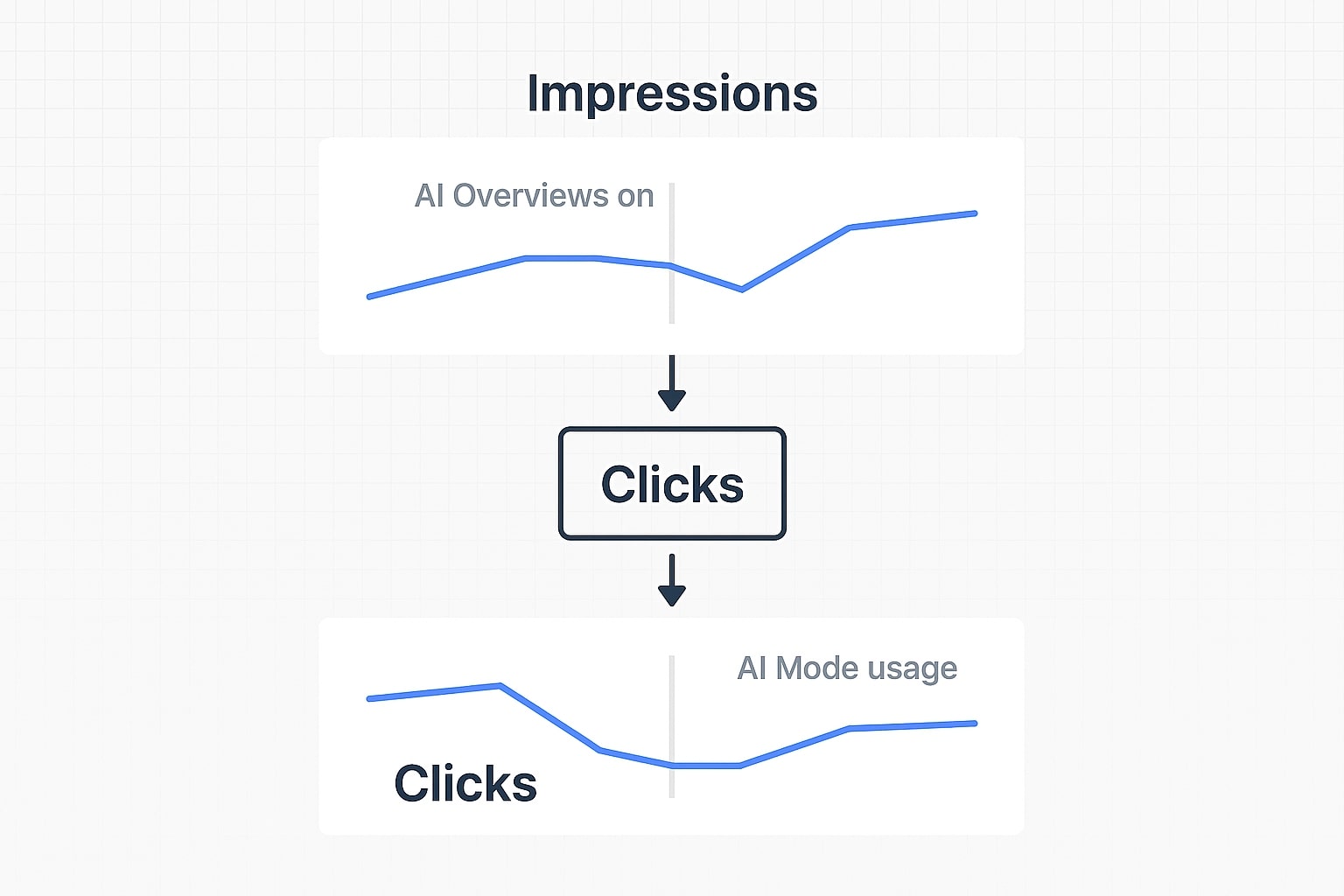
Industry panels show rising impressions and mixed click behavior as AI surfaces expand
The biggest shift is behavioral. Google says people who see AI Overviews become happier with their results and search more often, especially for complex questions.[15] Independent datasets add nuance, BrightEdge reports impressions rising while click-through has declined about thirty percent since mid-2024, which suggests more information is being consumed inside results and fewer visits land on a single page. [16] Semrush shows the share of queries that trigger AI Overviews climbing through 2025.[1] SISTRIX tracks similar growth across markets and notes that authoritative topical sources surface more often even if they are not the top classic result.[17]
For you, the implication is clear, optimize both for inclusion and for quality of the click. Google’s Search Central team emphasizes that when people do click from pages with AI Overviews, those visits tend to be higher quality, they spend more time and convert better.[18]
Layout changes also matter. AI Overviews are core and cannot be disabled, although the Web filter remains available to show only links, that means some of your users will browse results with zero features, others will live inside AI answers and follow-ups.[19]
The official rulebook, how to qualify for AI Mode and AI Overviews
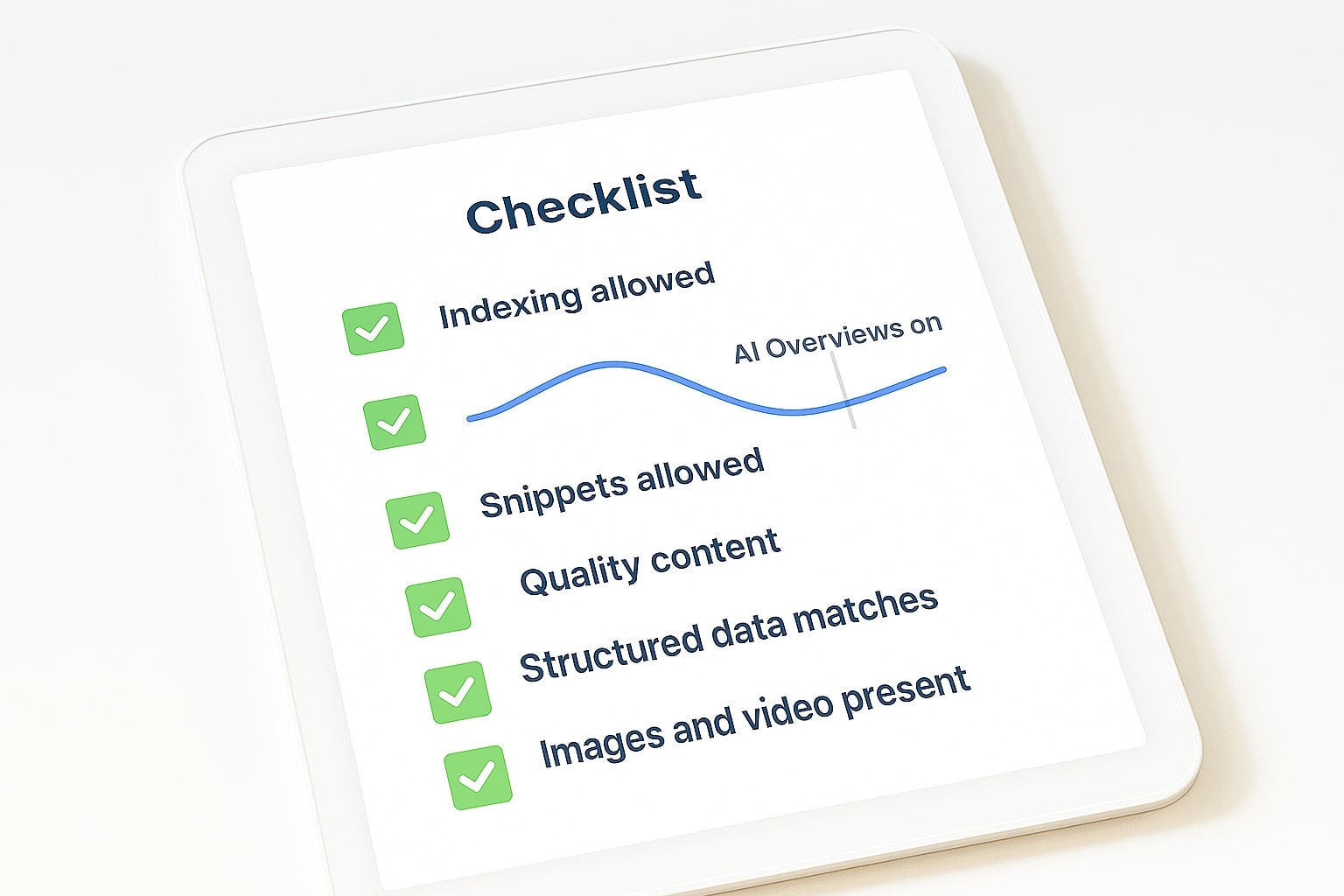
Fundamentals still rule, indexability, helpful content, matching structured data, and media quality
Google’s documentation is explicit. There are no extra tags, files, or special schema to appear in AI Mode or AI Overviews, eligibility follows normal indexing and snippet requirements, the same fundamentals apply.[4] You and I should focus energy here:
- Technical eligibility. Ensure pages return 200 status, are indexable, allow crawling, and are eligible for a snippet.[20]
- People-first content with evidence. Google’s guidance reiterates helpful, reliable, unique content, including original data and first-hand experience, the E-E-A-T framing still helps you self-evaluate.[21]
- Structured data that matches the page. Schema helps for rich results, but only when it reflects visible content.[22]
- Multimodal readiness. Support text with quality images and videos, keep Merchant Center and Business Profile accurate if relevant.[23]
- Preview controls when needed. If you must limit on-page snippets, use nosnippet, data-nosnippet, max-snippet, or noindex.[24]
A practical content checklist to actually show up
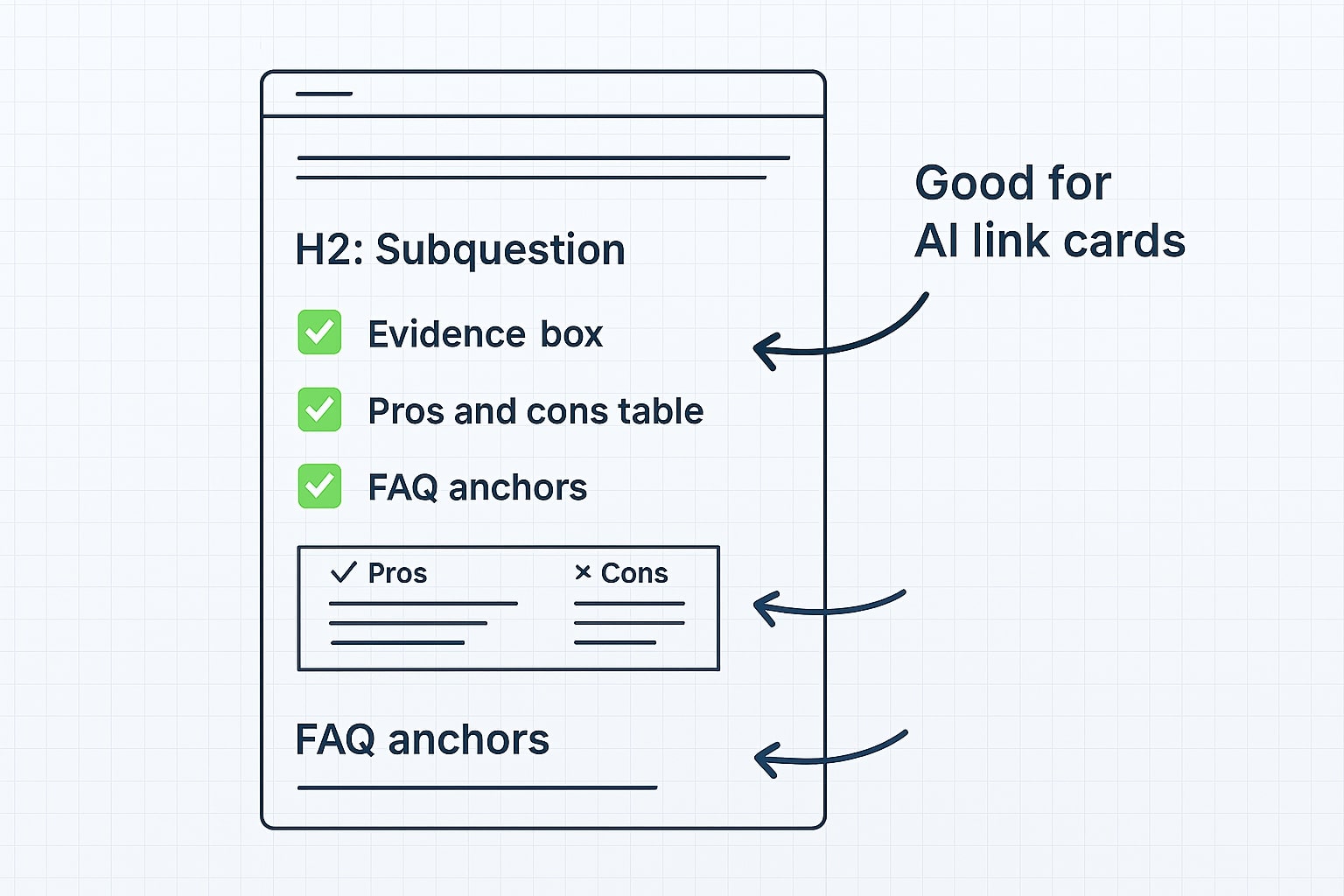
H2 subquestions, evidence blocks, comparison tables, and mini-FAQs raise inclusion odds
Before a bulleted list, I want you to see the pattern, AI Mode composes a long, synthetic answer that cites diverse sources, so pages that summarize clearly, cite original evidence, and package comparisons or steps tend to appear as helpful link cards. You and I can engineer that outcome without gimmicks.
-
Answer structure that maps to subtopics. Draft pages so each H2 mirrors a natural sub-question, then add short, skimmable intros of three to five sentences before any list.
-
Comparisons and choice support. Include comparison tables with column labels, pros, cons, and scenarios, AI Mode explicitly targets complex comparisons.[25]
-
Original evidence. Add small reproducible studies, screenshots, or field measurements, then cite sources with transparent links, LLMs ground better on pages with explicit references.
-
Clear anchors and mini-FAQs. Include jump links that resolve to concise answers, those anchors often show up as sitelinks inside AI cards.
-
Media the model can “read”. Place descriptive alt text and surrounding captions, ensure transcripts for videos so text is indexable.
-
Internal links that declare topic relationships. Use descriptive anchor text that aligns with how people ask, not vague “read more”.
-
Speed, readability, and mobile experience. Core Web Vitals still matter for user experience signals.[26]
Advanced tactics for AI Mode and AI Overviews
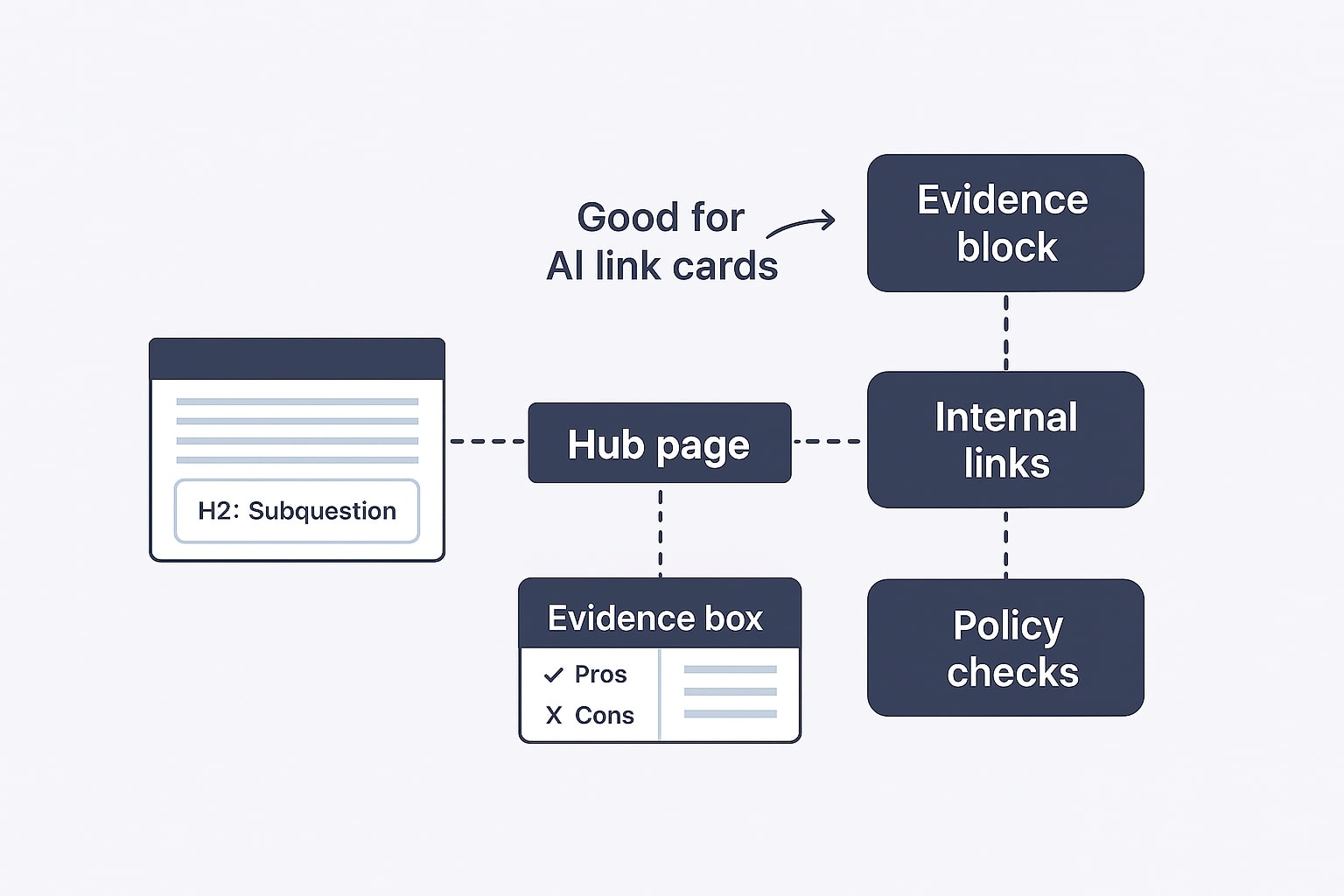
From hubs and internal links to constraint-driven comparisons and policy hygiene
This section is for teams with assets and a publishing cadence. The goal is to expand your footprint across the link set that AI Mode assembles.
-
Build topic authorities, not post islands. Create hub pages with clear taxonomies and internal links so query fan-out can find your subpages from different angles.fn n=”27″]
-
Design for follow-up pivots. Add “what to read next” sections that map to natural follow-ups, for example, after an AI answer on “best hosts in Indonesia,” make sure your subpages cover speed tests, TTFB by region, and CDN settings.
-
Use real comparisons with constraints. AI Mode shines on constrained asks, price brackets, dimensions, shipping times, so make your tables and text reflect real constraints and data sources.
-
Avoid the scaled content trap. Generating many thin variations is flagged under scaled content abuse, clean up anything that adds no value, or you will sink across classic and AI results.[28]
-
Check policy gray zones. Site reputation abuse complaints and enforcement continue, if you run third-party content, align it tightly with your brand scope and enforce editorial oversight.[29]
Check out this fascinating article: Complete Prompt Engineering Mastery 2025: Transform Landing Pages, SEO, and AI Videos Into Conversion Machines
Measuring impact and diagnosing issues without guesswork
There is no separate AI Mode performance report. Google says traffic from AI Mode and AI Overviews is counted under the Web search type in Search Console.[30] That means you should track by query families and landing pages. If you see declining clicks but stable impressions, test whether those queries started to trigger AI Overviews by sampling results in an incognito window or using third-party panels.
Three pragmatic measurements I use with clients:
-
Query set monitoring, cluster by intent phrase patterns, for example, “best x for y in z”, and monitor average position and CTR movements across that cluster.
-
Landing page cohorts, compare pages that follow this article’s checklist versus legacy pages, look for higher time on page and conversion rates, Google reports that clicks from AI pages tend to be higher quality.[18]
-
Preview control audits, when publishers want to limit snippet reuse, I verify robots meta and preview controls with the URL Inspection tool and wait for recrawl before drawing conclusions.[31]
Market dynamics and risks you should plan for
Industry reporting shows rising zero click behavior, especially in news contexts, and publishers are testing legal strategies. Similarweb and media coverage point to higher rates of answers without a click in 2025, while AI referrals from other platforms grow yet do not fully offset changes from Google.[32] [33] Publishers like PMC have filed suits, and trade associations are pressing regulators.[34] Google’s position remains that AI surfaces add opportunities and more diverse linking, and the Search Central team encourages site owners to measure value beyond raw click counts.[18]
Privacy also matters. AI Mode history and personalization tie back to Web and App Activity unless disabled, Google’s help pages document how to view and delete that history.[35] For training outside of Search, Google-Extended remains the control surface for other systems.[36]
A four-week playbook to adapt your site
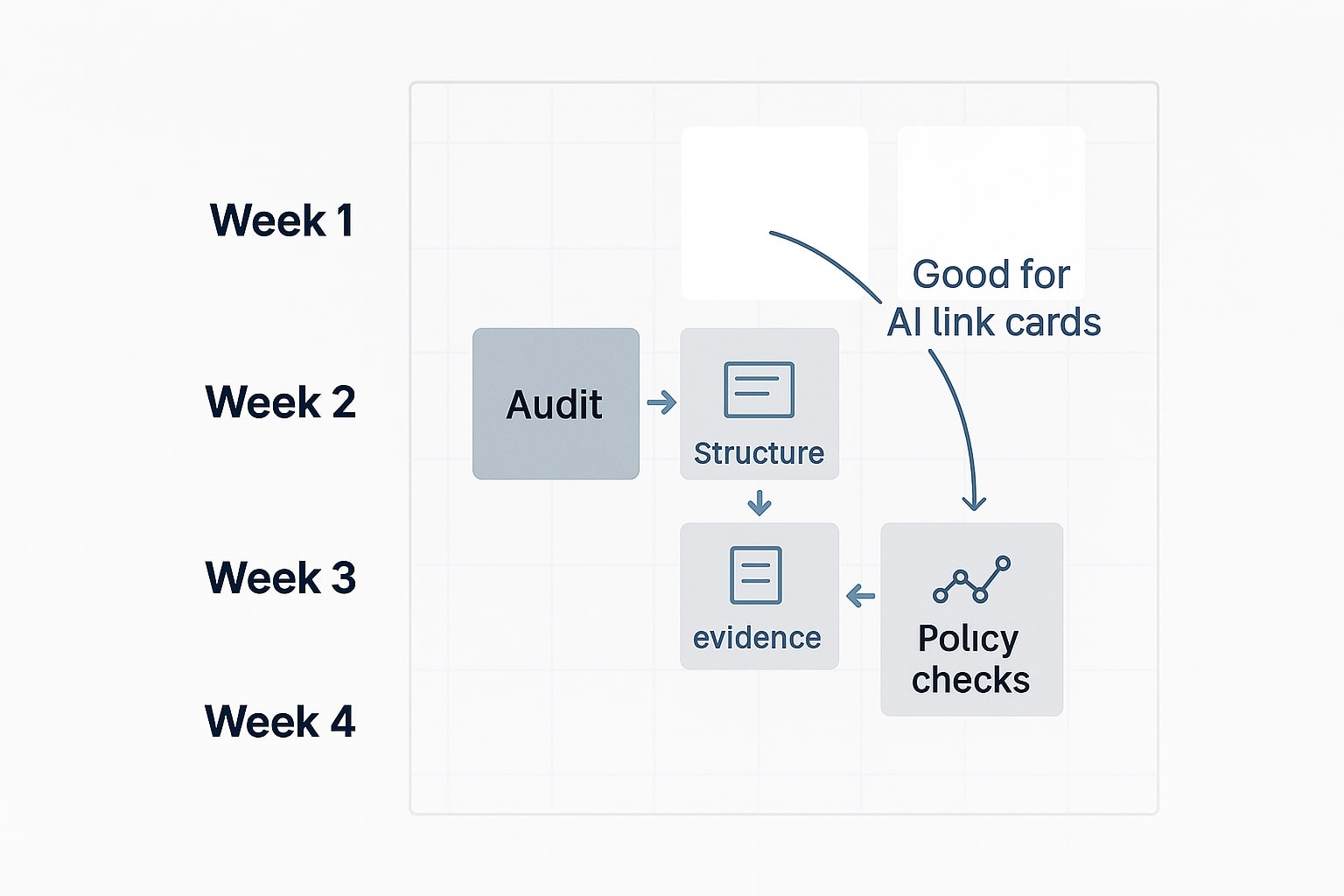
Inventory, structure, evidence, measurement, a monthly cycle you can repeat
Before the checklist, let me set expectations, the fundamentals still win. You will not add a magic tag; you will fix the content and the experience so AI features see you as the most helpful link.
Week 1, inventory and eligibility
-
Crawl your top 200 URLs, fix non-indexable pages, consolidate duplicates, and ensure every target page has a visible, concise summary at the top.
-
Validate robots, preview controls, and snippet eligibility.[24]
Week 2, structure for subtopics
-
Rewrite H2s to mirror sub-questions, add three-sentence context blocks before lists, insert comparison tables where decisions are likely.
-
Add two internal links per subsection to sibling articles that answer natural follow-ups.
Week 3, evidence and media
-
Add small original evidence blocks, timing measurements, screenshots, or data tables, each with a source credit using the footnote style you see in this article.
-
Add descriptive alt text and captions, publish transcripts for any embedded video.
Week 4, measurement and refinement
-
Build Search Console dashboards for your query clusters, annotate dates when AI Overviews started appearing in your samples.
-
Use analytics to measure time on page and conversion rather than clicks alone, align copy with what converts.
Where this leaves your SEO strategy
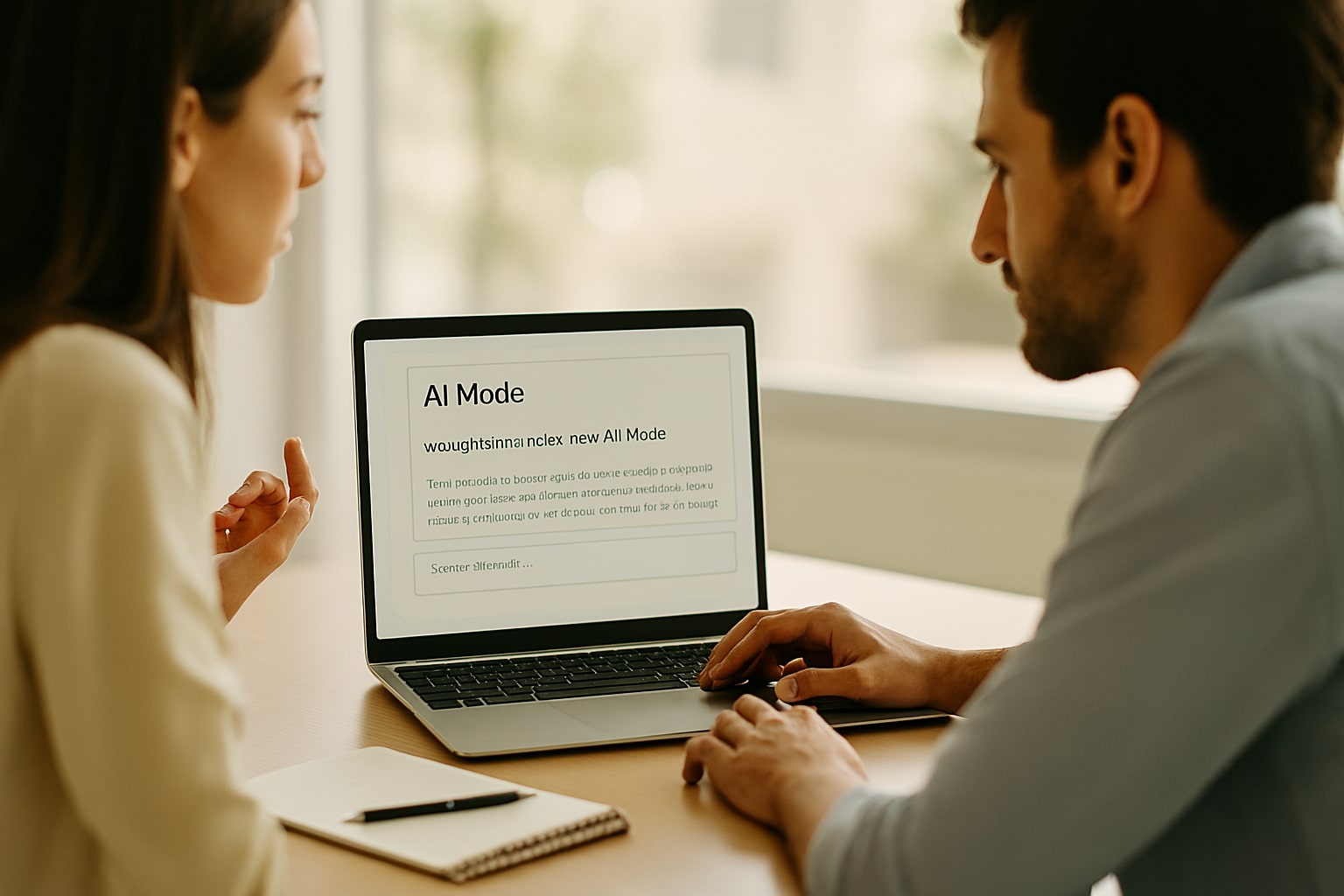
Join the discussion, share how Google AI Mode impacts your SEO and what you’re measuring
I want you to see AI Mode and AI Overviews as additional surfaces where your expertise can earn visibility, not as a replacement for the web. The bar has moved toward clarity, original value, and speed, which benefits sites that publish real work. If you already ship content with clear subtopics, decisions, and evidence, you are closer than you think. If not, now is the best moment to fix your structures and measure value with the discipline that modern Search demands. I would love to hear what you are seeing in your data, share a comment or a question, and I will help you adjust.
References
- Semrush — AI Overviews study, March 2025 share ↩
- Google Keyword Blog — AI in Search, AI Mode roll-out and usage lift ↩
- Search Engine Land — BrightEdge data, impressions up, CTR down ↩
- Google Search Central — AI features and your website ↩
- Google Help — Get AI-powered responses with AI Mode ↩
- Google Search Central Blog — Succeeding in AI Search ↩
- Google Help — AI Overviews, availability, Web filter ↩
- Google — Ways to Search, AI Mode overview ↩
- Google AI — Try AI Mode and apps ↩
- Google — Using generative AI content on your website ↩
- BrightEdge — One year into AI Overviews, usage patterns ↩
- SISTRIX — How AI Overviews change SEO ↩
- SISTRIX — Top domains in the new AI Mode ↩
- Google Help — Show only web links with the Web filter ↩
- Google Search Status — Core and spam updates in 2025 ↩
- Similarweb — Zero click analysis in 2025 ↩
- The Verge — PMC lawsuit over AI Overviews ↩
- Google Keyword Blog — AI Overviews launch context ↩
